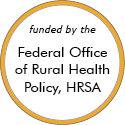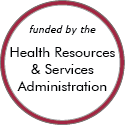Rural Schools and Health – Models and Innovations
These stories feature model programs and successful rural projects that can serve as a source of ideas and provide lessons others have learned. Some of the projects or programs may no longer be active. Read about the criteria and evidence-base for programs included.
Other Project Examples
Cold Water Safety Children and Youth Educator Program

Updated/reviewed April 2025
- Need: Drowning was a leading cause of death for children in Alaska.
- Intervention: Cold Water Safety and Survival for Educators workshops were developed in 1998, with help from a 4-year federal grant, to train educators to provide education and hands-on skills for school children and members of the public.
- Results: The safety program was integrated into about 79% of Alaskan school curriculum and schools in other states, helping to train hundreds of educators and thousands of children on the importance of cold water safety.
Jana's Campaign: Secondary Education Prevention Programming
Updated/reviewed April 2025
- Need: To reduce teen dating violence in middle schools, high schools, and youth organizations by promoting healthy relationship behaviors and fostering a culture of respect among adolescents.
- Intervention: Jana's Campaign offers prevention programs, including curricular and co-curricular activities, to highlight the 'red flags' and underlying causes of unhealthy dating relationships.
- Results: Since 2013, 677 middle and high schools and more than 102,350 students in Kansas, Nebraska, Colorado, Missouri, Oklahoma, Texas, Oregon, Montana, and Washington State have benefited from these programs.
Butte Child Evaluation Center

Updated/reviewed August 2024
- Need: Before 2000, Butte and southwest Montana saw around 1,300 cases of child abuse a year, with only a 20% conviction rate for perpetrators of sexual abuse.
- Intervention: Multiple agencies in the community came together to address the issue of child abuse by forming the Butte Child Evaluation Center (CEC), a Children's Advocacy Center.
- Results: During a 3-year grant cycle, over 200 interviews and exams were performed on victims of sexual abuse and the Butte CEC became the first program in Montana to be accredited by the National Children's Alliance.
Tooth B.U.D.D.S.
Added July 2024
- Need: To increase access to preventive dental care among children living in rural Arizona.
- Intervention: A nonprofit organization formed to offer free, school-based preventive dental services to children in two rural Arizona counties.
- Results: Throughout the 2023-24 school year, Tooth B.U.D.D.S. provided preventive services to 1,710 students in rural Graham and Greenlee Counties. Program staff use a telehealth platform to connect children to local dentists for follow-up care.
School-Based Drug Misuse Prevention Program
Updated/reviewed July 2023
- Need: School-based drug misuse prevention program in Appalachian Ohio, a need triggered by a high school student's overdose death.
- Intervention: Implementation of the HOPE curriculum, an age-appropriate K through 12th grade drug abuse prevention program.
- Results: No further drug overdose deaths after curriculum initiated.
South Dakota Harvest of the Month Program
Updated/reviewed May 2023
- Need: To encourage children to make healthy eating choices through learning and tasting.
- Intervention: Brief, fun, and informative presentations and tastings for children on over 42 different fruits and vegetables.
- Results: Participants are exposed to new foods and show more interest in healthy eating.
The Walking Classroom
Updated/reviewed March 2023
- Need: To increase students' levels of physical activity, engagement in learning, and academic achievement.
- Intervention: With The Walking Classroom, students take a brisk walk as a group while listening to a kid-friendly, custom-written educational podcast that aligns with the curriculum.
- Results: Children increase their activity level while learning academic content, building health literacy, and developing healthy lifestyle habits to prevent obesity and improve cognitive function and retention.
Health-e-Schools

Updated/reviewed October 2022
- Need: Rural school children lack proper healthcare resources within the school setting.
- Intervention: Health-e-Schools provides health services to students via telehealth using video conferencing and special equipment.
- Results: Health-e-Schools increases access to primary healthcare, increases attendance in the classroom, and decreases the amount of time that parents or guardians must take off of work to bring their child to health-related appointments.
The Adolescent Pre-Diabetes Prevention Program

Added October 2018
- Need: Prevention of type 2 diabetes in adolescents living in rural parts of Louisiana.
- Intervention: Through screenings, the Adolescent Pre-Diabetes Prevention Program detects the onset of prediabetes. Through nutrition and physical activity education, the program teaches high school students and staff how to adopt healthy lifestyles.
- Results: The program has seen an increase in enrollment and continues to see decreases in body weight, body mass index, and A1C levels among participants.
Last Reviewed: 4/22/2025

